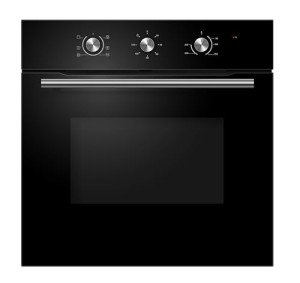How To Get More Value Out Of Your Builtin Ovens
The Rise of Built-in Ovens: Enhancing Modern Kitchens
In the ever-evolving world of home improvement, built-in ovens have become a staple in contemporary kitchen style. These appliances not only offer a sleek and smooth aesthetic however likewise contribute considerably to the functionality and efficiency of home cooking. This article explores the different aspects of built-in ovens, including their benefits, types, installation factors to consider, and maintenance, along with regularly asked concerns to provide a comprehensive overview.
What is a Built-in Oven?
A built-in oven is an appliance developed to be set up into kitchen cabinetry, offering it a structured appearance and maximizing counter area. Unlike standard freestanding ovens, which stand alone and are often bulky, built-in ovens fit flush with cabinetry for a more integrated look. They are readily available in various sizes, designs, and functions, catering to a large range of cooking requirements and kitchen styles.
Advantages of Built-in Ovens
Built-in ovens come with numerous advantages that make them appealing to homeowners. Below are some of the crucial advantages:
- Space Efficiency: Built-in ovens conserve counter space while optimizing kitchen layouts.
- Customizable Design: They can be integrated into cabinetry, allowing property owners to personalize aesthetics according to individual taste.
- Boosted Performance: Many built-in ovens come equipped with advanced cooking technologies, enabling better heat circulation and faster cooking times.
- Availability: Their installation at eye level makes it simpler to inspect food without flexing down, offering higher benefit and security.
- Resale Value: A modern, well-designed kitchen can boost property value, making built-in ovens a financial investment worth thinking about.
Kinds Of Built-in Ovens
Built-in ovens can be classified based on their design and function. The following list lays out the typical kinds of built-in ovens available on the market:
- Single Ovens: A basic model that includes one cooking compartment.
- Double Ovens: These featured 2 separate compartments, which enable cooking multiple dishes at different temperature levels.
- Wall Ovens: Installed into the wall for a space-saving service, these ovens offer benefit and availability and can be either single or double.
- Steam Ovens: These use steam for wet cooking and are frequently preferred for healthier meal preparation.
- Convection Ovens: Designed with a fan that distributes hot air, ensuring even cooking and browning.
Type
Description
Suitable For
Single Oven
One cooking compartment for basic baking and roasting.
Small homes and kitchens.
Double Oven
2 compartments for synchronised cooking of various dishes.
Large households with varied menus.
Wall Oven
Built into the wall for simple gain access to.
Space-conscious kitchens.
Steam Oven
Cooks using steam for much healthier options.
Health-conscious people.
Stove
Circulates hot air for even cooking and faster results.
Baking enthusiasts and chefs.
Setup Considerations
Choosing to set up a built-in oven includes numerous factors to consider to make sure that it fits flawlessly within the kitchen. Essential aspects include:
- Cabinet Dimensions: Accurate measurement of the cabinet area needed for the oven is crucial for an appropriate fit.
- Power Supply: Built-in ovens usually require a dedicated power supply; seeking advice from a certified electrician might be required.
- Ventilation: Ensure that the oven's ventilation requirements are met to promote safe operation.
- Regional Building Codes: Compliance with local codes is necessary when setting up any kitchen device.
It's strongly advised that installation be carried out by experts to ensure safety and adherence to manufacturer specifications.
Maintenance of Built-in Ovens
Keeping built-in ovens is important to ensure their durability and operation. Below are some tips for effective maintenance:
- Regular Cleaning: Wipe down surfaces after each use to avoid build-up; consider self-cleaning options if available.
- Examine Seals: Inspect the oven door seals frequently for wear and tear to keep efficiency and prevent heat loss.
- Calibrate Temperature: Occasionally check and adjust oven temperature settings if cooking outcomes are irregular.
- Expert Servicing: Schedule routine upkeep with certified professionals for electrical elements and deeper cleansing.
Often Asked Questions (FAQs)
Q1: How do I pick the ideal size built-in oven for my kitchen?
A1: Measure the readily available cabinet space and consider the cooking routines of your family. built in electric oven and gas hob packages or double ovens are typical choices based on meal preparation needs.
Q2: Are built-in ovens more energy-efficient than freestanding ones?
A2: Built-in ovens can be more energy-efficient due to better insulation and advanced cooking technology; however, real effectiveness depends upon the specific model and use.
Q3: Can built-in ovens be installed anywhere in the kitchen?
A3: Built-in ovens need specific cabinetry and might need a devoted power source, so preparing their positioning thoroughly within the kitchen layout is essential.
Q4: What kind of upkeep do built-in ovens require?
A4: Regular cleaning, inspecting door seals, adjusting temperatures, and professional servicing as required are all elements of correct maintenance.
Built-in ovens are a remarkable addition to modern-day cooking areas, offering both visual and useful advantages. Their space-saving design, personalized choices, and advanced functions cater to diverse cooking needs. When considering a built-in oven, property owners need to take into account their particular cooking choices, kitchen layout, and upkeep abilities. By doing so, they would be making an important financial investment in their home, increasing both performance and design.
